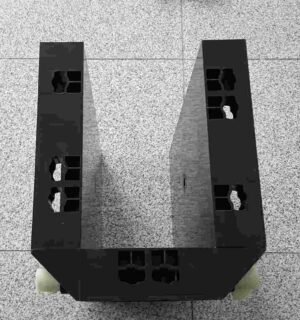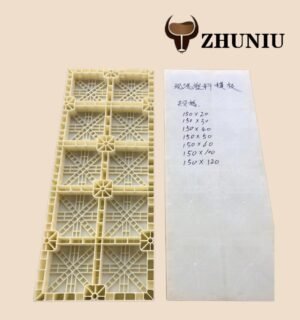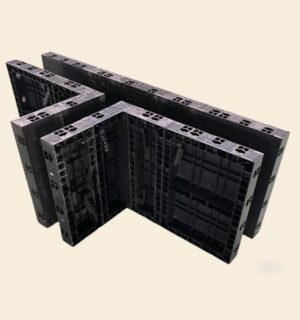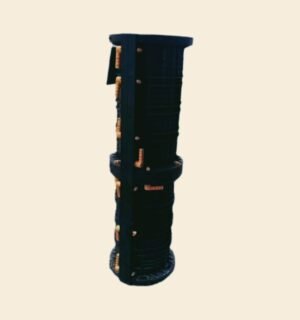Description
Product Design Concept
- Lightweight Construction: Plastic formworks are 60-70% lighter than steel, reducing labor costs and improving handling efficiency.
- Corrosion Resistance: Unlike steel, plastic does not rust, making it ideal for humid environments or projects near coastal areas.
- Smooth Surface Finish: The non-porous plastic surface yields concrete walls with minimal imperfections, often eliminating the need for plastering.
- Modular Design: Interlocking panels and adjustable supports allow customization for various wall heights, curves, or complex geometries
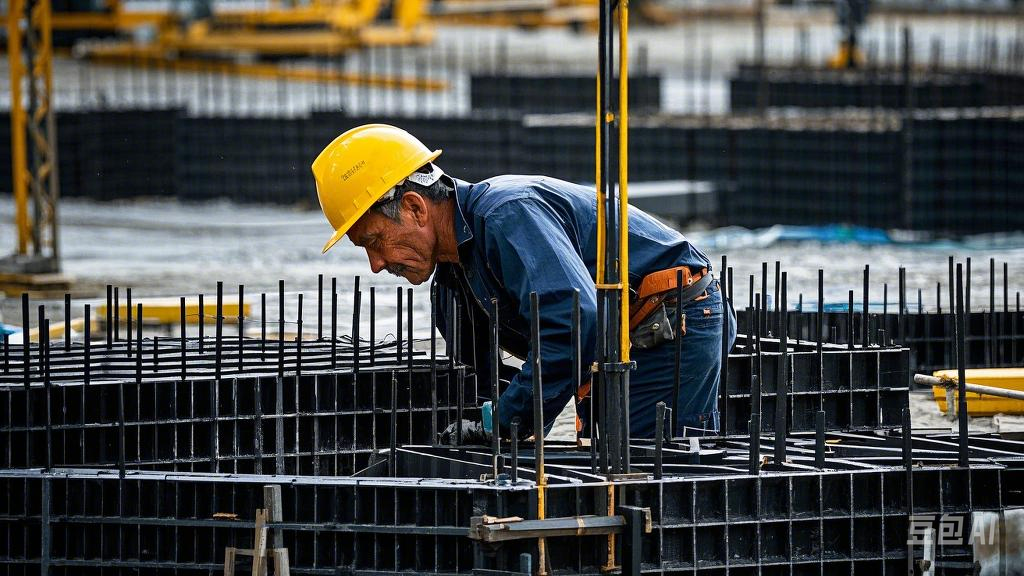
Advantages Over Traditional Formworks

Installation and Technical Considerations Foundation Preparation:
- Our technicians customize exclusive formwork configuration design drawings for clients, maximizing formwork utilization and improving adaptability.

- Construction workers assemble the formworks according to the drawings.
- Handles are used to connect the formwork panels.Peripheral reinforcement is achieved through secondary strengthening with back braces and tie bolts.
- Concrete Pouring: The non-stick surface allows concrete to cure without adhesion, ensuring easy form removal.
- Quality Control: Laser leveling and 3D modeling are often used to verify dimensions before pouring.
Construction cases:
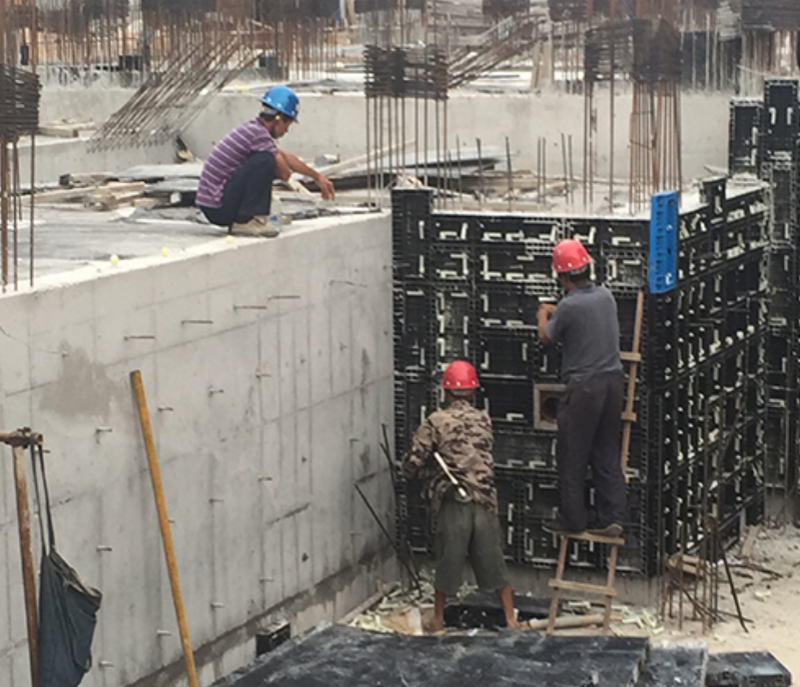
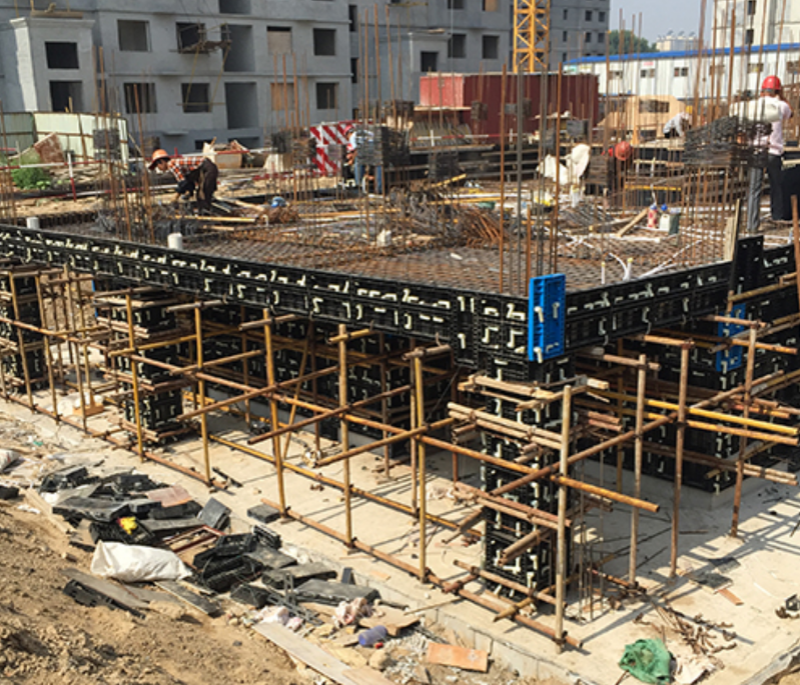
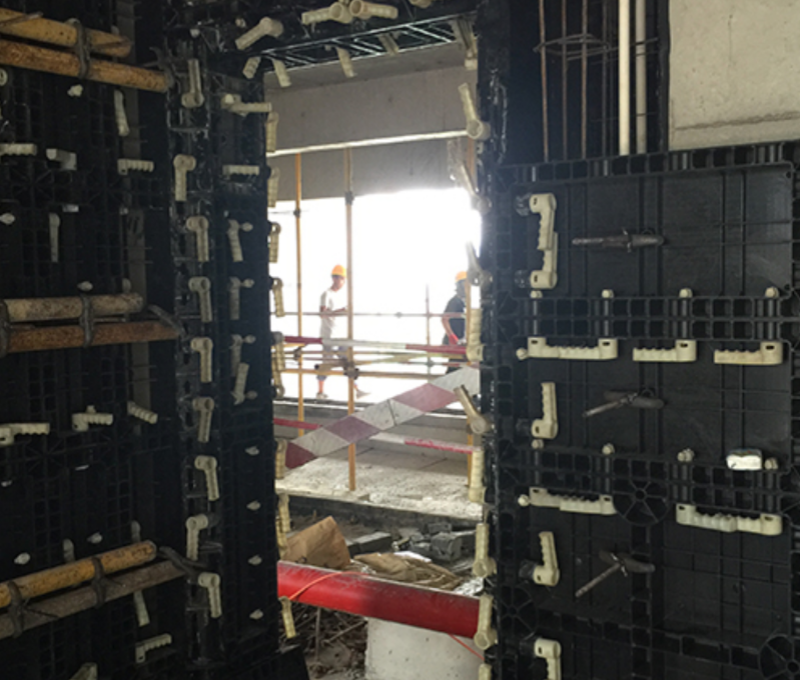
Case Study:
The Green Tower Project In Singapore’s Green Tower, a 30-story sustainable building, plastic formwork was used for all concrete walls. The system: Achieved a 90% reuse rate for panels. Reduced water consumption in form cleaning by 80%. Enabled a 4-day cycle per floor, accelerating the project by 3 months. Produced concrete walls with a finish quality that met LEED Platinum standards.

Future Trends and Innovations Smart Formwork Integration:
- IoT sensors embedded in plastic panels can monitor concrete curing conditions in real time.
- 3D-Printed Components: Custom plastic formwork parts are now 3D-printed to fit unique architectural designs.
- Bioplastic Formworks: Research into plant-based polymers aims to create fully biodegradable formworks for temporary structures.
Environmental and Sustainability Benefits
- Waste Reduction: Traditional wooden formworks generate 1.5 tons of waste per 1,000 m², while plastic systems produce less than 0.2 tons.
- Recyclability: At the end of their lifecycle, plastic formworks can be recycled into new construction materials, reducing landfill waste.
- Energy Savings: Manufacturing plastic formwork consumes 40% less energy than steel production.
- Carbon Footprint: A study by the European Construction Industry Federation found that plastic formwork reduces CO₂ emissions by 60% compared to wooden alternatives.
Conclusion
Plastic formwork for concrete walls represents a fusion of efficiency, sustainability, and technological advancement in construction. By addressing the limitations of traditional materials, it offers contractors a viable solution to meet tight deadlines, reduce costs, and minimize environmental impact. As the industry continues to prioritize green building practices, plastic formwork is set to become the standard for concrete construction worldwide.
We look forward to your kind inquiries at any time if you find our products satisfactory.
If you want all our product sizes and product catalog, you can contact our business executive
whatsapp/wechat: +86 18054536350 or CONTANT US
also You can enjoy 5% discount on your initial order.



